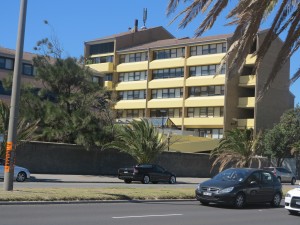What are the realities concerning the NBN and Foxtel
Article
NBN is good for business: Foxtel unpicks PM’s conspiracy theory | The Australian
My Comments
One of the comments that has been raised through this election campaign about the National Broadband Network was that it would hurt Foxtel’s traditional business model.
Foxtel, like Sky in the UK, are a pay-TV provider that has control over its own infrastructure, whether through access to satellites or the HFC-based cable network. This provides for “end-to-end” provisioning and management of the pay-TV service with a set-top box installed at each TV set serving as the service provider’s point-of-control in the customer’s home.
Compare this with the IPTV model that the NBN will facilitate and which is being encouraged with Google Fiber in Kansas City, USA, the French “triple-play” operators, and FetchTV and T-Box / BigPond Movies in Australia where these services are transmited using the same bandwidth and infrastructure as your Internet service.
Infact the Internet-driven model is becoming a reality for the pay-TV industry in may different ways.
For example, this model, coupled with the next-generation broadband services like the NBN could support the next-generation 4K ultra-high-definition TV technology which yields pictures that are sharper and more detailed than current-generation high-definition TV. In this case, it could come in handy with pay-TV’s “bread-and-butter” content which are the premium sports channels that carry live broadcasts of sporting events and a pay-TV provider could bring this content through to those of us who use 4K UHDTV technology without reinventing the wheel.
The IPTV model allows Foxtel, Comcast, Sky UK and others to compete in the crowded “content-on-demand” market when it comes to keeping their premium movie and TV-program services relevant. This is through offering a portable “content-on-demand” service with either streaming or downloading abilities and a large content library.
There is also the cost savings that the IPTV model could yield where the pay-TV provider doesn’t have to be sure they have access to cable and satellite infrastructure to distribute the pay-TV service. Similarly, they could benefit from the use of software as a point-of-control when “platform-based” devices like smart TVs, games consoles, tablets and the like are used or can implement the point of control in carrier-provided Internet-gateway devices. It also has opened up new directions for Foxtel such as the provision of the Play and Go IPTV services which are offered more cheaply than the traditional services that are based around a PVR set-top box associated with cable or satellite infrastructure.
To the same extent, it could also be more cost-effective to provision viewing endpoints with the pay-TV service through the use of the software which could open up the feasibility of including a household’s TVs and other devices in one subscription without the customer having to pay anything extra. In a similar way, a household doesn’t need extra infrastructure to gain access to pay-TV service because they use the existing Internet connection; as well as allowing some portability for pay-TV subscriptions.
What really has to happen is that pay-TV services have to evolve to the newer IP-based business models that NBN and other next-generation broadband services facilitate in order to keep themselves afloat. They can still offer their subscriptions and pay-per-view but use this technology to work a leaner, more capable and cost-effective service.
May the bull artists who seed doubt about the NBN harming Foxtel please cut the nonsense!

